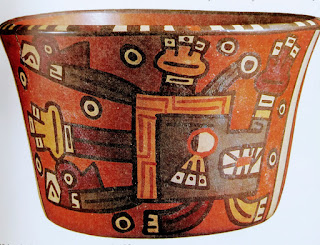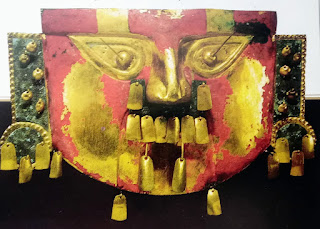LOS INCAS (primera parte)
Los Incas…
Comunidad considerada amos del Perú desde
1438, llegaron a extender su territorio a Bolivia, sur de Ecuador, oeste de
Brasil, norte de Argentina y Chile. Estamos hablando de lo que se denominó el
“Imperio del Tahuantinsuyo”.
Fueron monoteístas y creían en Viracocha,
forma que se presentaba grabado en las montañas con rostro alargado, nariz,
aguileña, y barbado, mientras que los incas eran lampiños; por lo que al llegar
los españoles al mando de Pizarro creyeron que era su divinidad y le dieron la
bienvenida. El comienzo del fin.
Debemos entender que el sol "inti" fue para los Incas el espíritu vibrante.
Esta gran civilización con dotes de
guerrero, administrativas y organizacionales, fueron tomando pueblos con una historia
tres mil años, pues su sabiduría y capacidades eran irrevocables.
Tal era la estirpe Inca (guerrera, fuerte,
inteligente y laboriosa), que entendieron que apoderándose de los pueblos y su
cultura, el esplendor sería mayor y en menor tiempo. Además entendieron que
cada uno, según la ubicación geográfica y sus saberes ancestrales producían
maravillas, y esas, debía compartirlas de un modo organizado con el resto del imperio,
recibiendo a cambio, lo que no producían. Es así que los “paracas” compartieron
maravillosos tejidos y cerámica policromada y brillante.
Los”
moches” grandes ceramistas, elevaron ánforas
de todo tipo, austera y con decoración y
muy creativa en la forma.
Los “chimúes”:
su impecable joyería en plata y oro con incrustaciones de piedras semipreciosas,
además de su fantástico arte plumario.
“Tiahuanaco” sus tejidos de lanas de llama,
guanaco y vicuñas proporcionó abrigo a todo el imperio.
Los
Uros del Titicaca aportaron todo tipo de objeto tramados en junco.
Esta historia continuara....
The Incas…
Community considered masters of Peru since 1438, they came to extend their territory to Bolivia, southern Ecuador, western Brazil, northern Argentina and Chile. We are talking about what was called the "Empire of Tahuantinsuyo".
They were monotheists and believed in Viracocha, a form that appeared engraved in the mountains with a long face, nose, aquiline, and bearded, while the Incas were hairless; Therefore, when the Spaniards arrived under the command of Pizarro, they believed that he was their divinity and welcomed him.
This great civilization with warrior, administrative and organizational skills, were taking peoples with a history of three thousand years, because their wisdom and capabilities were irrevocable.
Such was the Inca lineage (warrior, strong, intelligent and industrious), who understood that by taking over the towns and their culture, the splendor would be greater and in less time. They also understood that each one, depending on the geographical location and their ancestral knowledge, produced wonders, and these had to be shared in an organized way with the rest of the empire, receiving in return what they did not produce. This is how the "paracas" shared wonderful fabrics and polychrome and brilliant ceramics.
The "moches" great potters, raised amphorae of all kinds, austere and decorated and very creative in form.
The “chimú”: their impeccable silver and gold jewelry encrusted with semi-precious stones, in addition to their fantastic feather art.
"Tiahuanaco" its llama, guanaco and vicuña wool fabrics provided shelter to the entire empire.
The Uros of Titicaca contributed all kinds of reed-woven objects.
This story will continue...
Lic. Teresa Lorenzoni

















Comentarios
Publicar un comentario